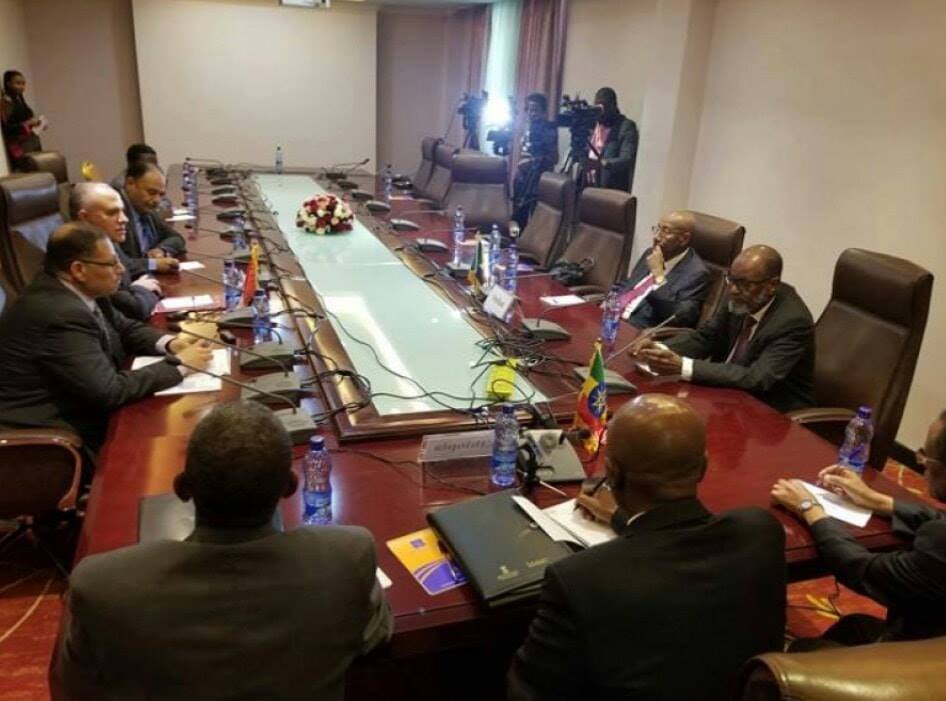Egypt’s Nile Delta, which is considered as the country’s major breadbasket, is at a serious risk because of natural conditions that include the Nile river’s flow of water and transported sediments from Ethiopia.
The 660 cubic metres of water per person currently supplied by the Nile is one of the world’s lowest annual per capita water shares. With a population expected to double in the next 50 years, Egypt is projected to have critical countrywide fresh water and food shortages by 2025, according to the study.
The study, which was conducted by the Geological Society of America GSA, says the soil-rich delta is only 1 metre above mean sea level on the Mediterranean coast, which makes it subject to uneven rates of submergence.
Among present critical challenges that face the Nile Delta are the reduction in Nile water and sediment below the High Aswan Dam. The research expects that “problems of fresh water and energy poverty in the lower Nile Basin are likely to be seriously exacerbated in years ahead by construction of Ethiopia’s Grand Renaissance Dam (GERD).”
Urging the downstream and upstream countries, the researchers called on Egypt, the Sudan, and Ethiopia to resolve the looming crisis of diminished Blue Nile water and sediment distribution to the lower Nile Basin and Egypt’s delta margin.
Egypt receives about 70% of its water flow from the Blue Nile and Atbara river, both sourced in the Ethiopian plateau, then merge as the main Nile in northern Sudan.
“The much-increased role of human activity through time in this region needs to be emphasised,” because those activities have altered flow conditions of the Nile and distribution of nourishing organic-rich soil in the delta. Those human activities include the barrages in the 1800s, construction of the Aswan Low Dam in 1902, and the Aswan High Dam in 1965.
While the delta margin is being lowered (subsidence), sea level is also rising at a rate of about 3 millimetres per year. The study suggests that delta lowering and sea-level rise accounts for submergence of about 1 centimetre per year.
At present rates, saline intrusion is now reaching agricultural terrains in central delta sectors and researchers believe that the coastal 20 to 40 kilometres of delta surface will be underwater by the end of this century, according to the study.
At present, the country’s population has reached more than 90 million, with a growth rate above 2% per year. Of this number, 45–50 million people live in the delta or in proximity to it.
The low-lying delta plain is only about 1 metre above present sea level. The northern third of the delta is lowering at a rate of about 4 to 8 millimetres per year due to compaction of strata underlying the plain, seismic motion, and the lack of sufficient new sediment to re-nourish the delta margin being eroded by Mediterranean coastal currents.
The additional serious hydraulic problem for Egypt is that Ethiopia will shortly complete construction of the largest hydroelectric dam in Africa, the GERD. The large reservoir behind the dam is to be filled over a three to five-year or longer period, during which it is expected that the amount of Nile flow to Sudan and Egypt and its delta will be substantially reduced.
The Grand Ethiopian Renaissance Dam, formerly known as the Millennium Dam, is under construction in the Benishangul-Gumuz region of Ethiopia, on the Blue Nile river.
Construction of the dam began in April 2011. However, Egypt has expressed concerns that its construction could negatively affect its historic Nile water share of 55 billion sqm, which it has had access to since a 1959 agreement between Egypt and Sudan.



